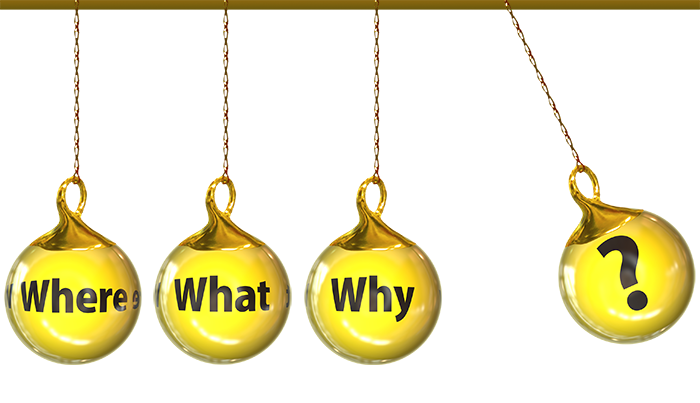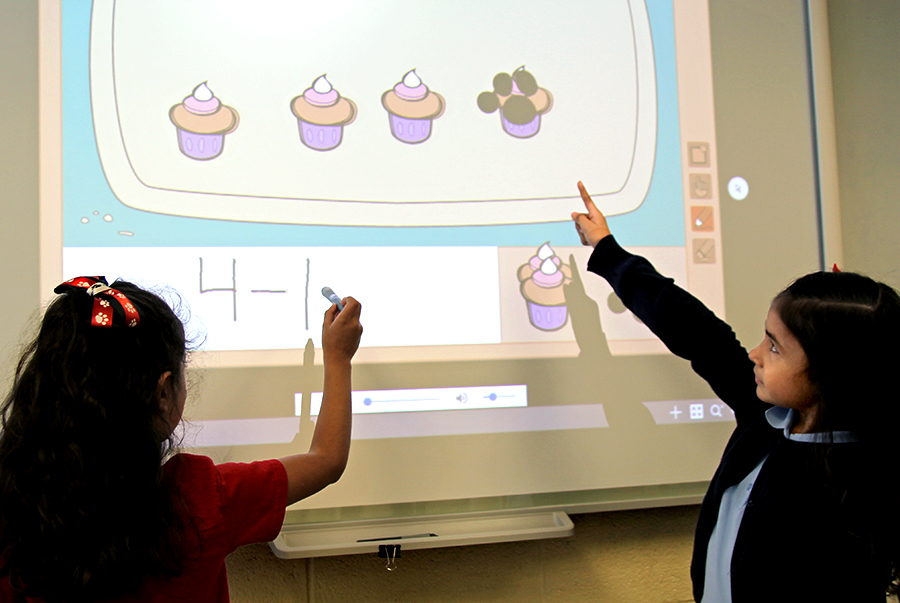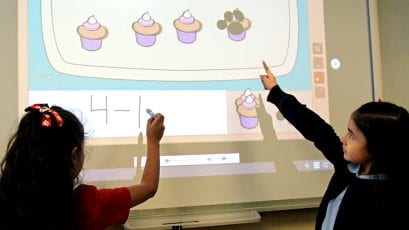Addition and Subtraction
Language in Mathematics: Questioning Strategies in Math (Part 2)
Questioning as an Active Thinking Math Strategy
This is Part 2 of a 3-part series:
- Math and Literacy Part 1: Activating prior knowledge and using schema to make predictions
- Math and Literacy Part 2: Questioning as an Active Thinking Math Strategy
- Math and Literacy Part 3: Visualization and Modeling
Questioning, the second of the three research-based strategies covered in this series on language in mathematics, is effective in generating active engagement in class. Click here to read Part 1 of the series. Techniques for questioning help clarify and deepen the understanding of a focused math topic, but for many students, questioning is not instinctive. Teachers who model effective questions help their students to build interest and become stronger mathematicians by:
- demonstrating a purpose for the math,
- focusing student attention on what they are learning,
- enabling students to think actively,
- encouraging self-monitoring of understanding,
- and helping students review content and relate it to what they know already.

Getting Started with Questioning
A great first step in using questioning strategies in your math classroom starts with modeling “wonderings” or observations during number sense or math chat sessions, and then recording those made by students. Display student observations on a chart and categorize them based on the kinds of thinking involved, centered around the four stages of language in mathematics described by Dr. Calvin Irons in his blog post, Using Language Stages to Guide the Development of Concepts (Addition), summarized below.
The Four Math Language Stages
These stages describe how students relate to mathematics, progressing from the personal to the abstract.
- Student
This is the language that comes from the child’s everyday world experiences, including both fiction and nonfiction situations. Some questions arising at the student language stage might be, “I wonder how many cookies the kid ate?” “How many birds landed on the branch?” “I wonder how much money they spent?”
- Materials
This is language that comes from using concrete and pictorial materials, broadening the understanding associated with the concept being developed. Some of these questions might include: “How many were covered up?” “I wonder what they took away?” “Did they erase any of the pictures?”

- Mathematical
Once students are familiar with the language associated with materials, they may be seeking more specific ways of relating mathematical ideas. They begin to use math-specific terms in questions that may resemble these: “How much did they subtract?” “This looks like a minus problem, so what was the original amount?” “What are the angles of the object?”
- Symbolic
Symbols are the mathematical numerals and/or glyphs that directly represent mathematical thinking. Initially, symbolic language is used to represent the math in questions. Later, this language in mathematics extends into finding solutions to the problems that incite these questions. Some of these questions may include: “I wonder if 8 – 6 can be used to understand the decimal fraction .08 – .06?” “I wonder is the = (equals) symbol mean the same as?”
Add more of these observations and questions to the chart as the year goes on, using student language, and continue to model various kinds of questions, using progressively more advanced language. Also, invite students to meet in small groups or pairs to share and compare questions, and encourage them to list new questions generated through these discussions.
In the next blog we will visit a third research-based literacy strategy immensely beneficial to elementary math instruction: visualization and modeling. We will take a peek at how students develop and utilize mental strategies to better adjust their thinking to varying tasks. This reinforces the sense that mathematics is a flexible subject benefitting from self-monitoring for understanding.
About the Author
Brian De Moss is the Director of School Partnerships at ORIGO Education and works with some of the largest school districts seeking mathematics improvement (Fairfax County, Hawaii DOE, Fort Worth ISD, and Albuquerque) with the ORIGO Stepping Stones mathematics program. Brian has been involved in mathematics education for over 26 years. He started his career as a kindergarten teacher in Arizona after completing his BA in elementary education at the Center for Excellence at Northern Arizona University in 1992. Brian received his MS from Northern Arizona University in 1998 in Curriculum in Educational Leadership. In 1992, he accepted a position at the Bullhead City School District, Bullhead City, Arizona, where he has been involved in the teaching kindergarten through Grade 2. Brian was formally trained and certified as a multi-age teacher as well as a Project LIFE coach for Clark County School District. Brian is a passionate promoter of the concept of math as a social subject.
About ORIGO Education
ORIGO Education is dedicated to making learning mathematics meaningful, enjoyable and accessible for all, offering Pre-K through Grade 6 instructional materials, and professional learning.
![]()




